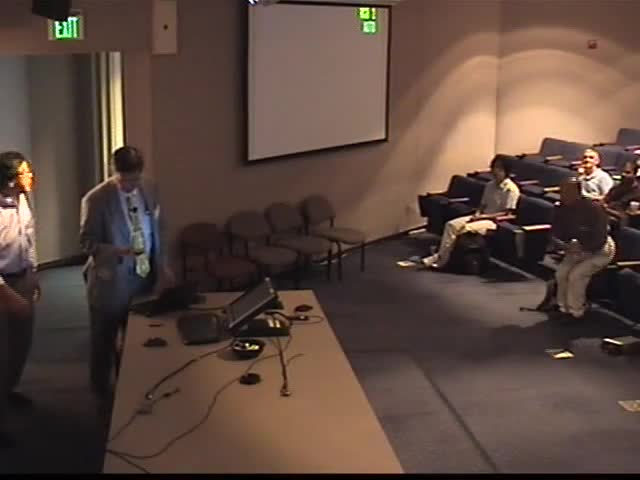Methods to solve multi-scale electromagnetic problems
Presenter
August 2, 2010
Keywords:
- Electromagnetic
MSC:
- 74F15
Abstract
Solving electromagnetics problem is a challenging task, especially when the structure is multi-scale. These structures are often encountered in circuits in electronic packaging, small antenna designs, as well as small sensor designs. A challenging problem in computational electromagnetics is in solving multi-scale problems in the low frequency regime, especially in the regime between statics and electrodynamics. When the wavelength is much longer than the size of the structure, the physics of the electromagnetic field resembles those of circuits, and hence, this is the circuit physics regime. When the wavelength is sizeable compared to the structure, than wave physics becomes important, and it is important that a simulation method can capture the wave physics interaction. When a structure is multi-scale, and has parts that are small compared to wavelength, but at the same time, is on the order of wavelength, then both circuit physics and wave physics are important. A simulation method has to capture both physics. We will discuss the use of the equivalence principle algorithm (EPA) to capture the multi-scale physics of complex structures. In this method, complex structures are partitioned into parts by the use of equivalence surfaces. The interaction of electromagnetic field with structures within the equivalence surface is done through scattering operators working via the equivalence currents on the equivalence surfaces. The solution within the equivalence surface can be obtained by various numerical methods. Then the interaction between equivalence surfaces is obtained via the use of translation operators. When accelerated with the mixed-form fast multipole method, large multi-scale problems can be solved in this manner. We will also discuss the augmented electric field integral equation (A-EFIE) approach in solving the low-frequency breakdown problem as encountered in circuits in electronic packaging. In this method, the EFIE is augmented with an additional charge unknown, and an additional continuity equation relating the charge to the current. The resultant equation, after proper frequency normalization, is frequency stable down to very low frequency. This belongs to a generalized saddle-point method, and apparently it does not suffer from the low-frequency breakdown, but it does have the low-frequency inaccuracy problem. We will discuss the use of the perturbation method to derive accurate solutions when the low-frequency inaccuracy problem occurs. We will also discuss the hybridization of EPA and A-EFIE to tackle some multi-scale problems.
